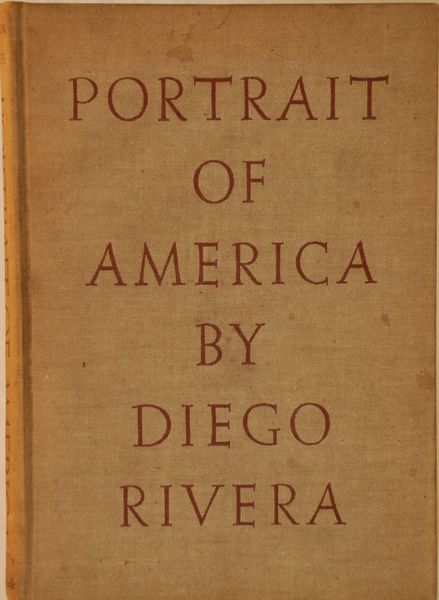The plates are reproductions of murals painted for the Stock Exchange Luncheon Club and the School of Fine Arts in San Francisco, the Institute of Fine Arts in Detroit, and the Museum of Modern Art, Rockefeller Center and the New Workers’ School in New York
Considered the greatest Mexican painter of the twentieth century, Diego Rivera had a profound effect on the international art world. Among his many contributions, Rivera is credited with the reintroduction of fresco painting into modern art and architecture. His radical political views and tempestuous romance with the painter Frieda Kahlo were then, and remain today, a source of public intrigue. In a series of visits to America, from 1930 to 1940, Rivera brought his unique vision to public spaces and galleries, enlightening and inspiring artists and laymen alike.
Diego Rivera was born in Guanajuato, Mexico in 1886. He began to study painting at an early age and in 1907 moved to Europe. Spending most of the next fourteen years in Paris, Rivera encountered the works of such great masters as Cézanne, Gauguin, Renoir, and Matisse. Rivera was searching for a new form of painting, one that could express the complexities of his day and still reach a wide audience. It was not until he began to study the Renaissance frescoes of Italy that he found his medium. It was with a vision of the future of the fresco and with a strong belief in public art that Rivera returned to Mexico.
Frescoes are mural paintings done on fresh plaster. Using the fresco form in universities and other public buildings, Rivera was able to introduce his work into the everyday lives of the people. Rivera concerned himself primarily with the physical process of human development and the effects of technological progress. For him, the frescoes’ size and public accessibility was the perfect canvas on which to tackle the grand themes of the history and future of humanity. A life long Marxist, Rivera saw in this medium an antidote to the elite walls of galleries and museums. Throughout the twenties his fame grew with a number of large murals depicting scenes from Mexican history. His work appealed to the people’s interest in the history of technology and progress. The desire to understand progress was visible in the growing industrial societies of the 1930s, and Rivera saw the workers’ struggle as a symbol of the fragile political ground on which that capitalism trod.
